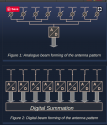Hyperwarp
Captain
Regarding the Type 1760 -
Don't know about the reliability. Does anyone have the original research paper?
All slides -
According to the last slide the 1760 can hit 250 km for 0.1 m^2 target. So, that would roughly mean,
Rc/Rn = (Sc/Sn) ^ 0.25
250/Rn = ((0.1/0.01)^0.25)
Rn = ~140 km
* Thats 140 km for 0.01 m^2 target

* I remember another post with a similar table for the J-20 radar and after the calulations, the value came to (at peak) 170 km per 0.01 m^2 target


Now the simple question is, can anyone verify this?
Don't know about the reliability. Does anyone have the original research paper?
All slides -
According to the last slide the 1760 can hit 250 km for 0.1 m^2 target. So, that would roughly mean,
Rc/Rn = (Sc/Sn) ^ 0.25
250/Rn = ((0.1/0.01)^0.25)
Rn = ~140 km
* Thats 140 km for 0.01 m^2 target
* I remember another post with a similar table for the J-20 radar and after the calulations, the value came to (at peak) 170 km per 0.01 m^2 target
Now the simple question is, can anyone verify this?


